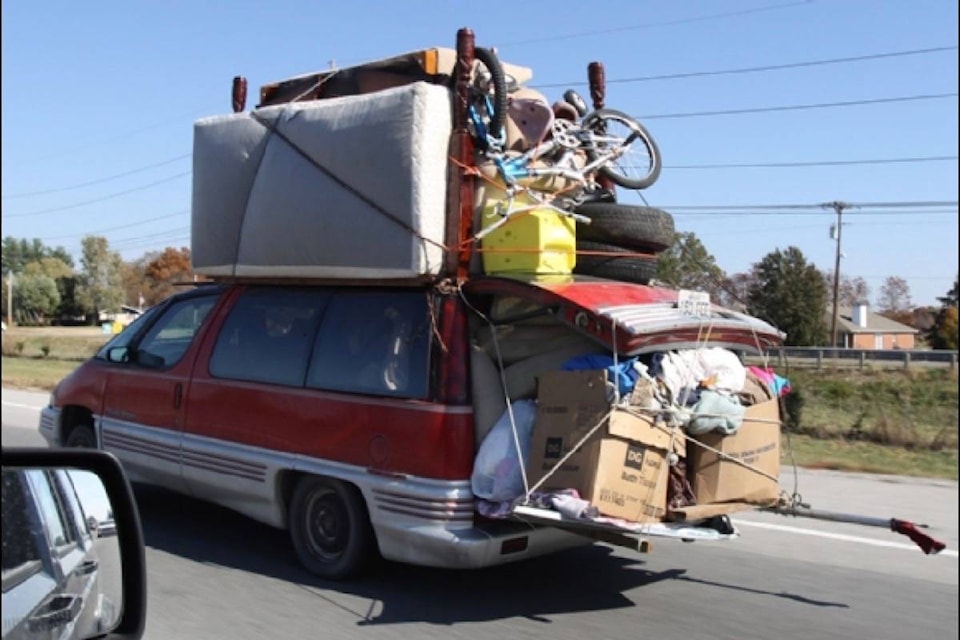Consider an incident where a ladder has fallen off a truck traveling on the highway. The driver following behind the truck takes evasive action that results in a collision. This question raises many important issues including hazard avoidance, duty at a collision, and load securement.
An object of any sort falling off of the vehicle in front of you is definitely a surprise. The actions available to you are usually to drive over the object, collide with it, or swerve around it. If you have maintained two to four seconds of following distance and made sure to keep an open space beside you on a multi-laned roadway, you will have given yourself both time to think and react as well as the room to do it. Always leave yourself an out!
The driver of the truck was indirectly involved in a collision on a highway, and has duties that he must fulfill. These duties include stopping or immediately returning to the scene, rendering assistance, and providing details in writing concerning himself, his vehicle, and his insurance to other drivers involved, the police, and any witness who demands it.
Load securement rules in B.C. include significant fines for those who do not obey. These fines are $173 for most people, but increase to $288 for commercial and business vehicles and $598 for drivers who do not obey an order to remove a vehicle from the highway until the load is properly secured.
Most of us carry loads that are a collection of smaller articles of some sort. These are known as aggregate loads. If the articles are not contained by the sides of the vehicle or tie downs, they must be covered in some manner to prevent them from bouncing, blowing, or dropping from the vehicle. A suitable tarp or net would be the answer here.
Larger articles may be secured with chains, ropes, belts, or cables. The methods can be complex, and the easiest way to learn about them is to download BC Booklet 2 - Cargo Securement or obtain a paper copy from the nearest weigh scale. You can also download the National Safety Code Standard 10 that the B.C. load security regulations are based on.
By now you might be thinking that all of this information is only important to know if you are a commercial driver or use a pickup or trailer to carry your cargo. Think again. Cargo that you load inside a passenger vehicle is just as critical. Load shifts while driving can be distracting and may cause fatal injury to the occupants in a collision.
The owner’s manual for our compact crossover SUV provides advice on cargo securement. There are tie down points for light items, and warnings about securing items placed on top of folded seats or loading the cargo space at the rear higher than the seat back.
While the manual does give information on how to determine maximum cargo weight, it does not advise about how much weight the rear seatback will stop from forcing its way forward in a collision. This is definitely something to consider, rather than trusting to luck. Check with the dealer or manufacturer for more information.
Tim Schewe is a retired constable with many years of traffic law enforcement. To learn more, visit DriveSmartBC.ca.
editorial@accjournal.ca
Like us on Facebook and follow us on Twitter
